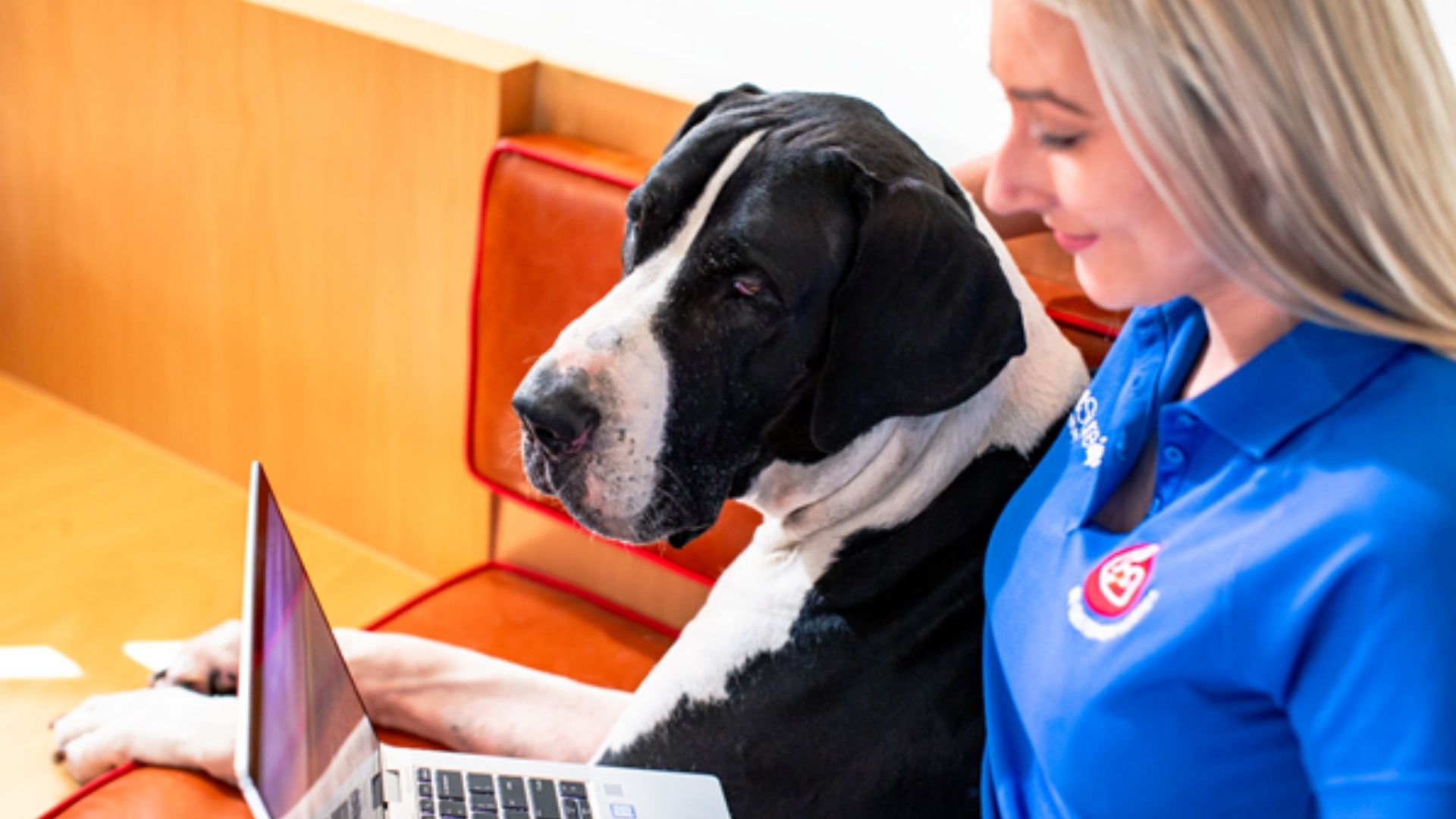Here’s a few key questions to ask ahead of purchasing a pet insurance policy to help ensure you find the right solution for you and your pet.
What is pet insurance?
Pet insurance is a financial services product designed to help pet parents cover unexpected Veterinary medical costs. Policies will offer a set benefit percentage – usually around 80% (referring to the amount you’ll get back for each eligible claim) up to an annual limit each year – which can be from $10,000 – $25,000 or higher depending on the product and provider you choose.
Pet insurance policies can be tailored to your budget with excess and benefit percentage reimbursement options available, noting that premium costs generally reflect the level of cover offered by the product. Learn more about pet insurance with this short video.
Why pet insurance?
In Australia we’re lucky to have some of the most talented Veterinary professionals providing the best medical care for our pets. But, excellent care does come at a price – particularly for unexpected health issues where immediate treatment, hospitalisation or specialist care is required.
Veterinary services in Australia aren’t subsidised by the government in the same way that human health is subsidised my Medicare, so the cost for providing care is higher, particularly with the improved technologies now available to assist with treatment. This means when it comes time for pet parents to pay for their pet’s treatment, they’re often caught off-guard with the cost of care, which can cause financial difficulty or even worse – the economic euthanasia of their pet. This is a terrible outcome for pets, pet parents and Vets, so helping pet parents prepare for these unexpected expenses ahead of time is key. Get an understanding of some common Veterinary treatment costs here, or learn more about pet insurance with this short video.
How old is your pet?
You can insure your puppy or kitten from as early as eight weeks of age, with a broad range of insurance options available to help ensure you have the financial assistance available when you need it most. Insuring your pet as early as possible can help make more claimable conditions available on your policy, as pre-existing health conditions won’t be covered if they were known ahead of purchasing a pet insurance policy (or occur within the policy’s waiting period).
If you have a slightly older pet, typically eight years or more, you will find that there are less pet insurance policy options available, so it’s best to shop around to find the right solution for you. Visit petsure.com.au/partners to find the details of almost 30 pet insurance providers, and use the filters to search by your pet’s age, and the product features you’re looking for.
How much are you looking to spend?
Pet insurance comes in all shapes and sizes, from policies just for indoor cats, to more basic cover or accident-only policies, to more comprehensive accident and illness products, and then your all-rounder accident and illness products with optional extras like dental or routine care items.
Generally speaking, your premium costs will reflect the level of cover you choose. This means that a more comprehensive accident and illness policy with additional care options will usually cost more than a more basic, accident-only policy, because you’re covered for more claimable conditions. Dental and cover for routine items like vaccinations (or items that are more expected and thus easier to budget for) typically aren’t covered in core pet insurance products, so if these features are important to you you’ll need to find a product that offers these features as an additional benefit. Visit petsure.com.au/partners to find the details of almost 30 pet insurance providers, and use the filters to search for the product features you’re looking for.
As your pet gets older your pet insurance premiums will also increase, reflecting the increasing health needs of a more mature animal and associated Veterinary treatment costs. It’s important to be aware of these rising premium costs so you’re not caught out each year when your policy renews.
To learn more about the different pet insurance product types, what’s generally covered and excluded and indicative price points, visit our handy Policy Finder tool at petsure.com.au/find-a-policy
What does pet insurance cover?
Pet insurance has been designed to provide assistance for larger, unexpected Veterinary expenses, helping ensure you’re not caught off-guard financially if your pet gets up to a little mischief (like eating a sock) or becomes unwell. Claimable conditions will vary by the policy you choose (listed in the product’s Product Disclosure Statement), but more comprehensive policies can include cover for:
- Motor vehicle incidents
- Allergic reactions to an insect
- Bone fractures
- Snake bites
- Ligament or tendon injuries
- Bite wound or fight wound abscesses
- Abscesses
- Lacerations and abrasions
- Ingestion of toxins
- Illness conditions, such as vomiting,
- Patella luxations
- Hip replacements
- Bladder stones
- Elbow dysplasia
- Corneal ulcer
- Autoimmune diseases
- Cancer
- Gastrointestinal problems
- Skin conditions
- Ear infections
- Pancreatitis
- Diabetes
If your pet does suffer from one of these conditions, pet insurance can help with treatment expenses for items like Vet consultations, pathology, medicines, x-rays, hospitalisation, surgery and more. Remember, the claimable items and conditions will depend on the pet insurance product type you choose, so always check the policy’s Product Disclosure Statement (PDS) to ensure the features most important to you are covered.
To learn more about the different pet insurance product types, what’s generally covered and excluded and indicative price points, visit our handy Policy Finder tool at petsure.com.au/find-a-policy
What doesn’t pet insurance cover?
As pet insurance is designed for larger and unexpected Veterinary expenses, your day-to-day pet care expenses like flea and worm treatments, vaccinations and grooming typically won’t be covered given they are a little easier to plan for. If these items are important to you, there are some pet insurance products available that have an allowance for routine care like vaccinations, microchipping, desexing, and prescription diets, but you’ll need to look for these features specifically – often referred to as ‘routine’ or ‘wellness’ products.
Cover for dental procedures is also an optional extra on some pet insurance policies. If you would like a policy with a dental feature be sure to shop around to find a product that includes this in the Product Disclosure Statement (PDS).
If your pet has known health issues ahead of purchasing a pet insurance policy (or the policy’s waiting period), these will be referred to as ‘pre-existing conditions’ and will be excluded for cover under the policy. Depending on what the condition is however (whether it’s chronic or something that can be cured with treatment), you may be able to get the exclusion removed from your policy.
All pet insurance products by partners administered by PetSure will have temporary pre-existing conditions (that is, conditions that aren’t chronic in nature and can be cured with treatment) automatically removed as an exclusion from the policy if the pet hasn’t shown signs or symptoms of that condition for 18 months or more (no matter when the pet insurance product was purchased). Other providers may request you to formally apply for a pre-existing condition policy review, which entails completing a form with your Vet and submitting for review.
Do you want an excess on your policy?
If you want to make your premium repayments a little lower, you may choose to have an excess on your policy. This means your regular premium repayments will be a little lower, however when it comes time to claim, you’ll pay an excess (typically between $50-$200) for each claimable condition, which is deducted from the amount you get reimbursed for the claim.
For example, let’s say you have selected a pet insurance policy with an 80% benefit percentage reimbursement (meaning the percentage you’ll get back for each eligible claim up to applicable annual limits) and an $100 excess. If you get an eligible Vet bill of $1,000, you’d get reimbursed $700 (as your excess of $100 would be deducted from the 80% reimbursement).
You’ll only need to pay the excess once per each claimable condition however, so if your pet has an ear condition that requires three visits to the vet in the same policy period (i.e. the first 12 months from commencement and all subsequent 12 months from renewal), you’ll only need to pay the excess once in that policy period as it’s to treat the same condition.
How quickly do you want to be reimbursed for eligible claims?
When it comes time to submit a pet insurance claim, chances are you’ll be a little stressed with your pet being unwell, so you’ll want a process that’s simple and gets your expenses reimbursed as quickly as possible. There are a few different ways to submit a pet insurance claim, with options and time taken to be reimbursed varying by providers, so research is key depending on what’s most important to you. Let’s look at the ways to submit a pet insurance claim:
- On the spot with GapOnly™
GapOnly™ is the latest pet insurance claims technology available at participating Vets that helps pet owners access their pet insurance benefit right away on eligible claims. Claims are submitted by the Vet while you’re still in-clinic, and are settled in under 10 minutes. This has been a long-awaited feature by pet parents, as on-the-spot claims processing on eligible claims means less upfront and out-of-pocket expense, reducing the financial barrier to seek Veterinary treatment sooner. The service is currently available with select pet insurance providers, with the latest partner list available at gaponly.com.au (including participating Vets).
- Electronically by your Vet
More than 1,050 Vets across Australia can submit your pet insurance claim for you in-clinic electronically – otherwise known as an eClaim. Apart from the GapOnly™ claims service, this is the next fastest way to claim, with claims typically processed within five business days. This service is available with all pet insurance policies administered by PetSure.
- Electronically through an online customer service portal
More than 1,050 Vets across Australia can submit your pet insurance claim for you in-clinic electronically – otherwise known as an eClaim. Apart from the GapOnly™ claims service, this is the next fastest way to claim, with claims typically processed within five business days. This service is available with all pet insurance policies administered by PetSure.
- Posting a paper claim
The final way to submit a pet insurance claim is to fill out a claim form together with your Vet, and ensure supporting Vet invoices and clinical notes are included for assessment before posting it in. Once the claim is received in the mail it will typically be processed within five business days, so it may take a little longer for you to be reimbursed for eligible claims compared to the other methods.
Learn more about the different ways to submit a pet insurance claim with this short video.
In summary
Whilst it can be extremely tempting to simply choose the cheapest pet insurance product available, asking a few questions and doing a little research ahead of time can go a long way in helping ensure you have the right product for you and your pet in the long-run. Consider the breed, age and health of your pet to help determine what common conditions you may be up against, and whether optional features like dental and routine care are important to you.
Additional pet insurance resources
MoneySmart’s pet insurance guide, developed by the Australian Securities & Investment Commission (ASIC)
Pet insurance can help by covering a portion of the eligible vet bill if the unexpected happens. Because it is difficult to predict the costs of veterinary care, it can help to have measures in place to help prepare for the unexpected. Check out our partner network and explore our policy tools to find a pet insurance policy.
Not all conditions or items are covered by Pet Insurance. Refer to the applicable Product Disclosure Statement for information about coverage and exclusions.








